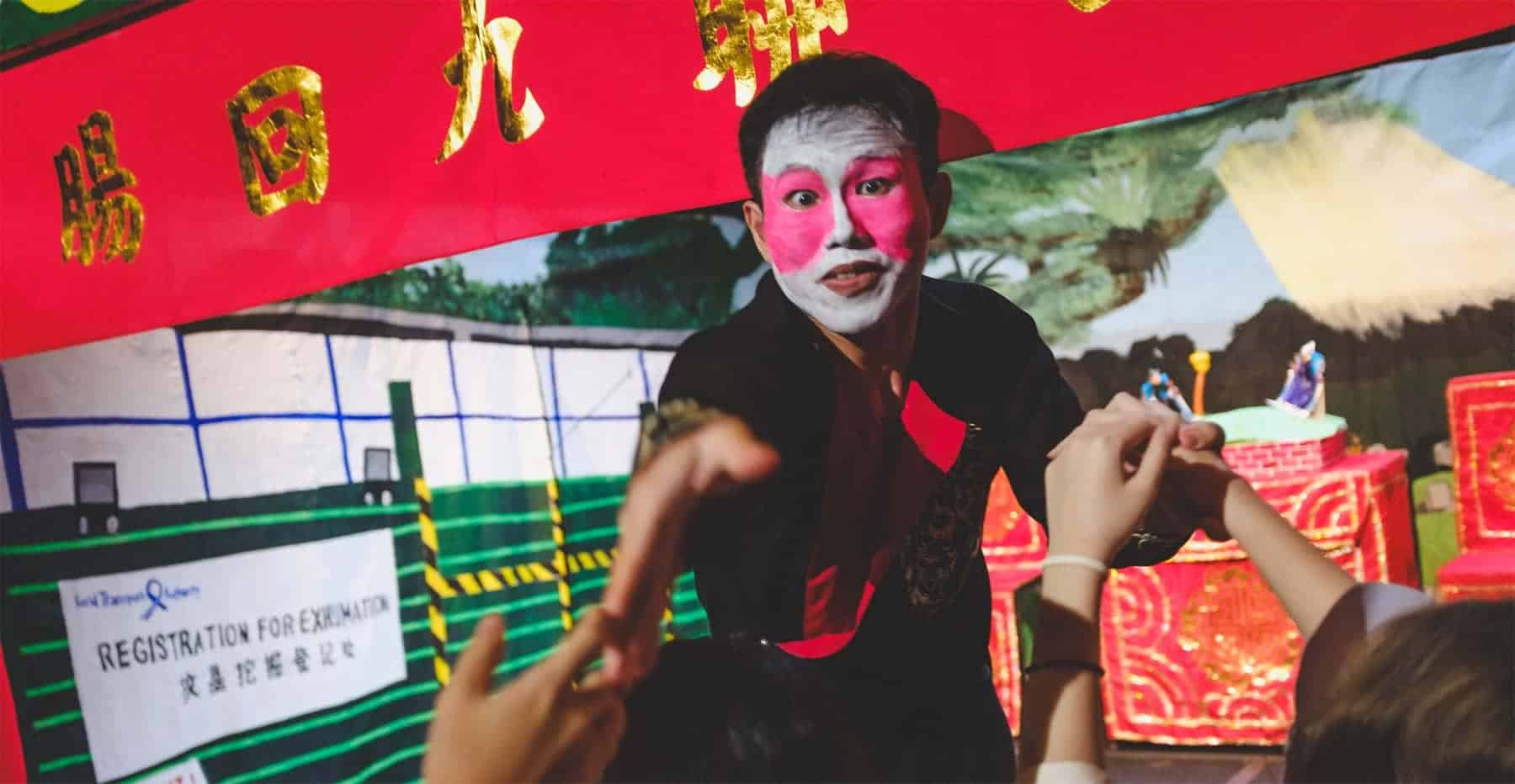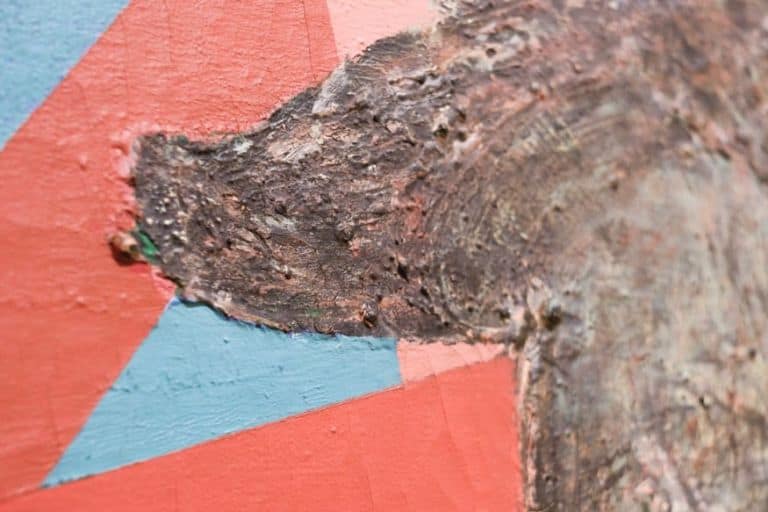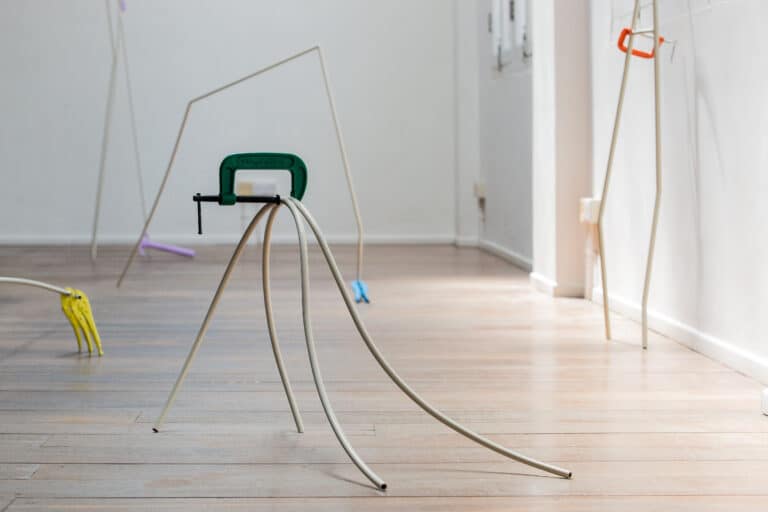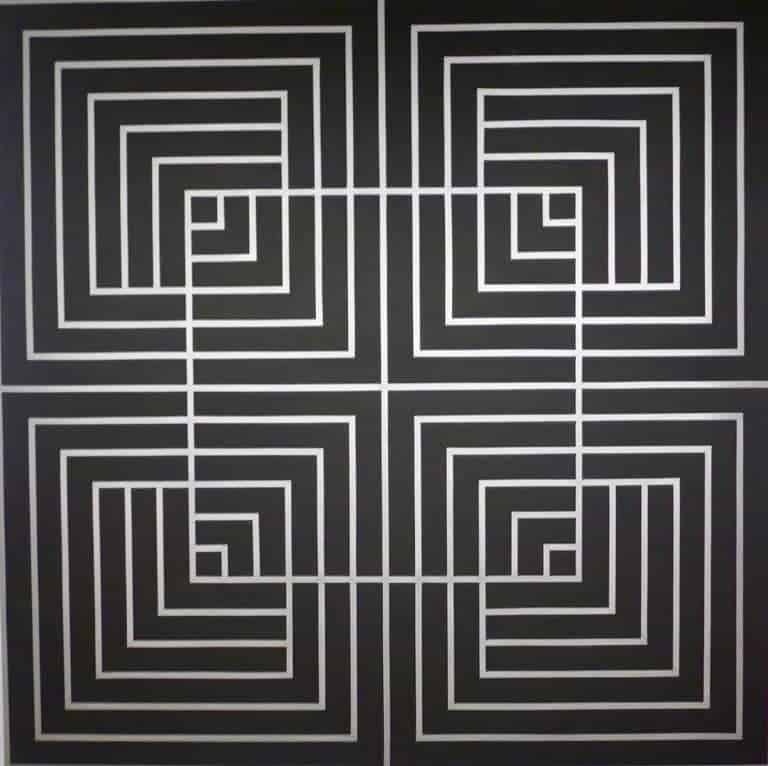As commonplace as traffic accidents tend to be, they are strangely always a spectacle. So with morbid curiosity, I inch closer to the scene where one car is up in flames, and another has a person trapped inside. The road is cracked and bent nearly 90 degrees, like a tsunami about to crash upon its already helpless victims.
All this is a twisted replica of the actual event in June 2018, where cracks appeared across Adam Road near the excavation site of an underpass that is now part of Lornie Highway. A red-faced fatality in garish garb, a boxy golden car fashioned out of joss paper – the scene has been reconstructed to scale, albeit as paper offerings that are typically burnt as tribute to the Chinese dead.
It is a nod to the historic cemetery, which had been the centre of much drama when the Land Transport Authority announced its plans to build an eight-lane carriageway through it. Heritage and nature groups had passionately campaigned to keep the cemetery intact, but in the relentless march of progress, 4,000 graves were eventually exhumed.
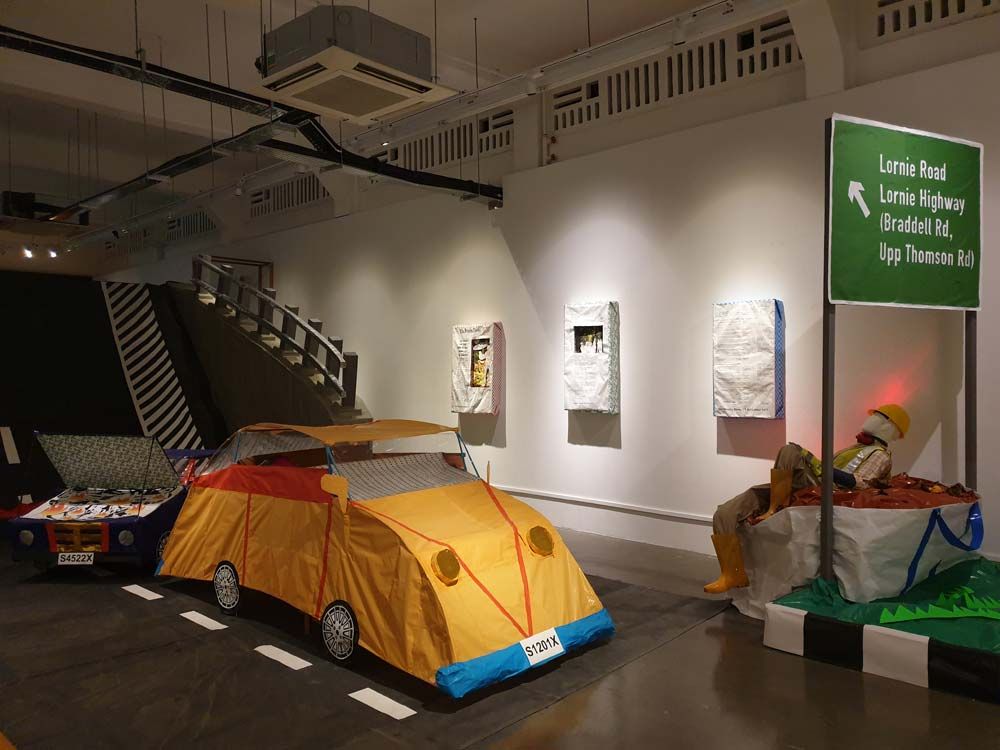
The work, Bukit Brown Index 132: Triptych of the Unseen is so titled to reference the way in which the drama is played out in three main aspects: (1) a wayang performance on (2) a Chinese getai stage, in addition to (3) the reconstructed accident scene. It seems that the artist collective, Post-Museum, is not interested in merely mourning the dead, but also in giving them voice.
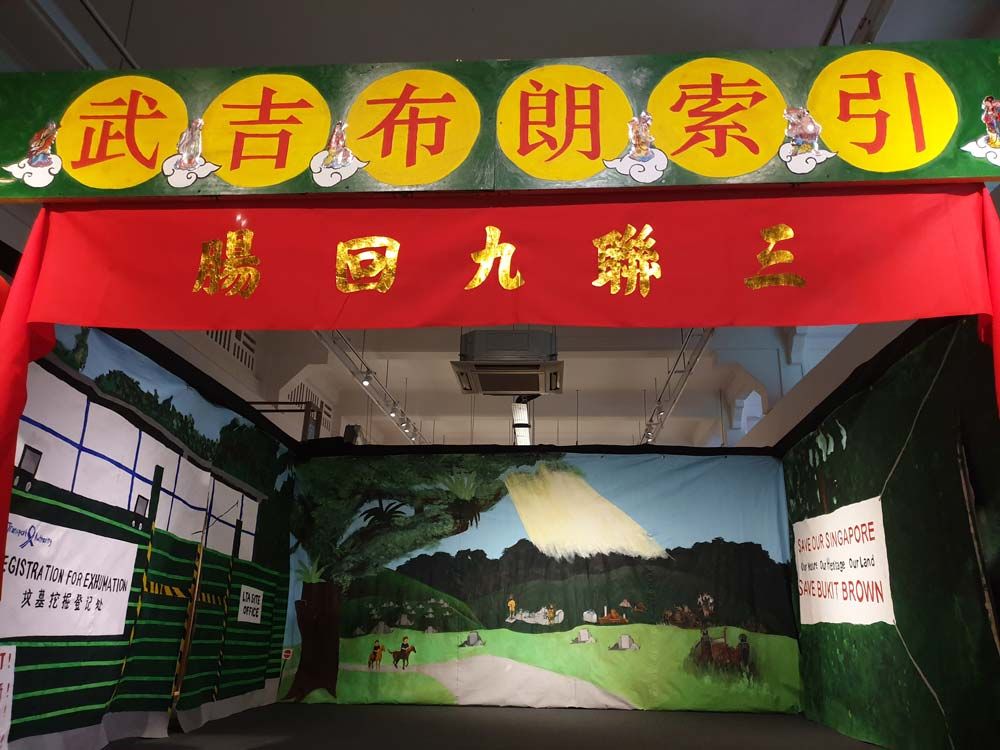
On entering the installation, I am invited to pick from three pairs of cardboard virtual reality (VR) goggles, and sit among the red chairs facing the stage. Each pair of VR goggles provides a different experience of the getai scene when worn. The first features a female ghost, as a voiceover tells the story of her separation from her husband and son during the second World War. The second is practically a silent dance of a black-robed bureaucrat, with whom an activist repeatedly seeks an audience. The third features the activist who constantly sways and punches her fist in the air. The virtual members of the audience get up, mount the stage, and sway in solidarity alongside her.
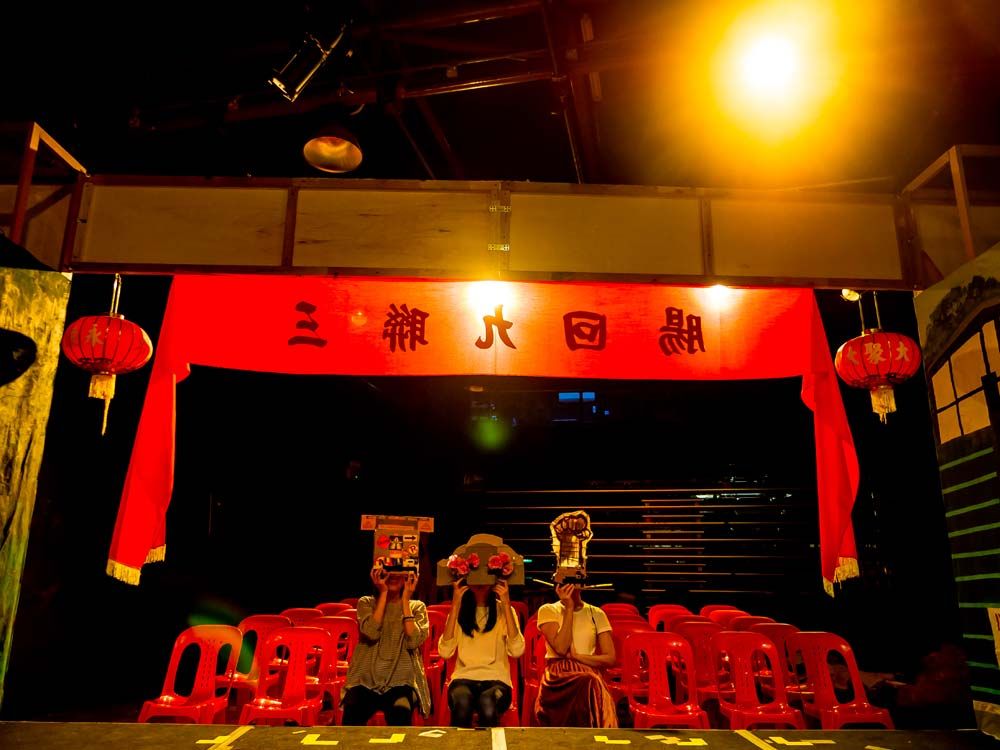
Interestingly, several visitors left after they had experienced the scene through just one pair of goggles. Had they thought that each goggle held the same experience, or were they simply impatient? Each of the VR experiences provides a perspective on one of the characters, to the exclusion of the others. Choosing to turn away before fully immersing oneself in all three experiences is, in a way, a form of shutting out the unheard perspectives and disregarding them. How many visitors would take 15 minutes – the combined duration of videos – to lend an ear to these parties’ pleas? With whom would we sympathise?

The choice of some audience members to turn away, consciously or subconsciously, without completing their experience of the performances seems to parallel our collective tendency to peer curiously into affairs yet walk away without taking action. It is perhaps akin to how drivers slow down to spectate an accident scene, before quickly moving onward in their own journey. But while we can render little help in a car accident, this national controversy surrounding Bukit Brown is not one that we can afford to pass comments on and simply ‘move on’. It highlights how our dire need for space constantly wrestles with the weight of our heritage, and puts our national priorities to the test.
I wonder, in this tug of war, whom amongst us would stand up to fight, and who is content merely to watch?
________________________
Bukit Brown Index 132: Triptych of the Unseen was part of the Singapore Biennale 2019, which ended on 22 March 2020.
PLURAL IS PROUD TO BE HAVE BEEN AN OFFICIAL MEDIA PARTNER OF THE SINGAPORE BIENNALE 2019, WHICH RAN FROM 22 NOVEMBER 2019 TO 22 MARCH 2020. FOR MORE INFORMATION, PLEASE VISIT SINGAPOREBIENNALE.ORG.
Editors’ Note: A previous version of this article indicated the title of the work as Bukit Brown Identity: Triptych of the Unseen. We have since amended the article to reflect the correct title, Bukit Brown Index 132: Triptych of the Unseen and apologise for the error.
